Updates are a rarity here these days but the end of the year seems like the appropriate time to come up with something to show I’m still here. As far as actual content goes, I’m still methodically scanning PC Zone’s. The plan was to have them all done before 2020 but the help I was receiving on that front stopped earlier in the year leaving it all to me once again. As of right now there are a mere 9 issues left so the whole lot should be archived by the end of February.
In slightly relevant news, I did a little work on improving Vecalabeth a couple of months back for the limited physical release that is part of the Kickstarter rewards for Through The Moongate part 2. I’ve added a title screen (plotted in true old school style on graph paper), tidied up the bugs and also done some work on map generation. Reproducing the maps faithfully isn’t easy as the original code basically relied on the non-randomness of the Apple II’s random number generator. This worked by supplying a seed number and it would effectively work through a given sequence of numbers from this starting point. It appears that all those years back Garriott simply found some seed numbers which worked reasonably well as a starting point for his map generator and went with it. Every time the code generates the map again, the random number generator gets reset which is why the code behaves exactly the same if you repeat the same events on a given level (a long known means to manipulate the random amulet effects among other things). This sort of psuedo-randomisation cause + effect was still present in later games. E.g. in Ultima 2 you can choose which stat got “randomly” raised at the Hotel California by counting the number of moves taken to walk to the clerk from entering the map. What I can’t find is documentation on exactly what the Apple’s random number generator does so I can reproduce it.
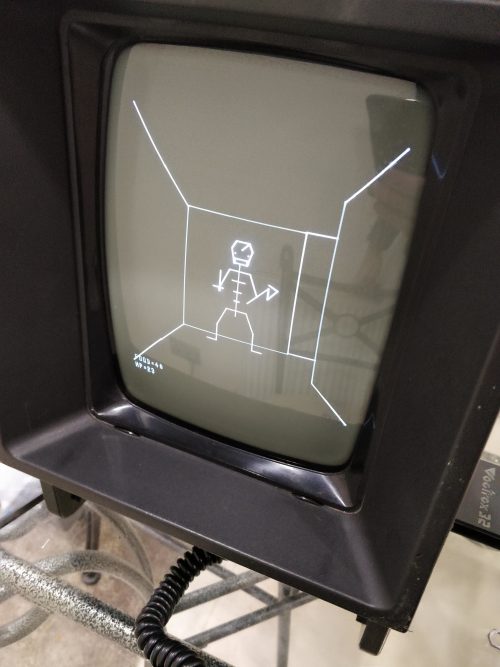
So instead of that, I’ve implemented my own pseudo-random generator for Vecalabeth to have static map levels based on your lucky number. I’ve taken the decision to keep everything else actually random so there is no knowing what the amulet will do this time around. This has gotten the game essentially where I want it to be but I have to tweak the map generation still to find a decent balance between dead ends and too open levels. I should have some help with playtesting ultimately so the port is on hold until then when I can get a second opinion. I won’t be releasing my updated code for Vectrex32 owners until some time after it’s in the hands of paying backers but I expect to put it on here sooner or later.
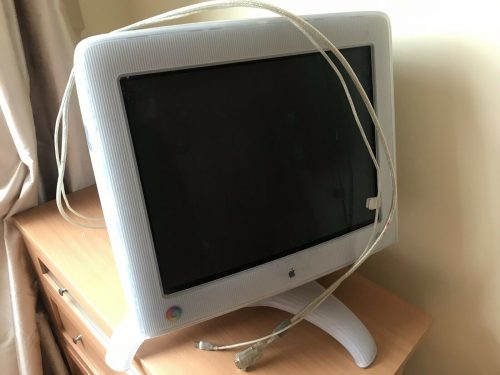
I thought I’d write about some recent random adventures in retro. I’m still acquiring the occasional piece of old hardware, one of the latest and largest being a 21″ Apple Studio CRT. 21″ monitors were extremely expensive when new and as a result relatively uncommon these days. This Apple Studio would have cost an outrageous £1500 back around the turn of the century. It was made specifically for Mac’s but contains a regular Sony Trinitron tube and uses a standard VGA connector meaning I reckoned it should work on a DOS PC at least in theory. The potential downside was that the picture controls aren’t in a menu on the monitor and were instead controlled by software on a Mac via a USB connection. This lack of compatibility gave me the chance to get it relatively cheap so I took a punt and grabbed it while I could. First impressions were promising. While it may not officially support resolutions below 640×480, the command prompt came up fine. The picture geometry all looked good and it appeared it was going to work straight out the box so I set to fitting it into my desk.
The desk I use for all this stuff is a peculiar arrangement I picked up many years back. The brand name escapes me all these years later, but a company in the 90’s came up with this idea of having glass sections in desks so you could mount your monitor below the surface at an angle and look down through the desk when using it. This saved a ton of space with CRT monitors, which given that I hadn’t even moved out of my parents at this point was a seriously useful feature. It’s a feature I still take advantage of being able to double up on monitors with my flatscreen and CRT being on the same desk. There are a couple of adjustable padded bars to accomodate different size screens, and originally a harness of sorts which wasn’t really needed and is long gone. The desk wasn’t supposed to support monitors larger than 17″ so I had major doubts on getting this behemoth in place. Attempting to manhandle 35kg of monitor into it was a minor nightmare but just about possible with enough perseverance.
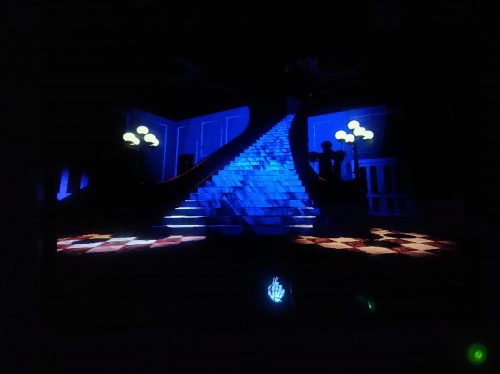
It was only at this point that I noticed that the picture was way too dark in some games even with brightness and contrast on maximum. 7th Guest above is a prime example. This could be due to fading of the tube over time but I think it’s more likely to do with Apple’s non standard implementation once again. Additional brightness controls were built into the display drivers on the Mac, working in the same way as a gamma control in a game. I could get a great looking picture in this way on my Mac but could barely see a thing in darker games in DOS. Not great and I was wondering if I’d wasted my money.
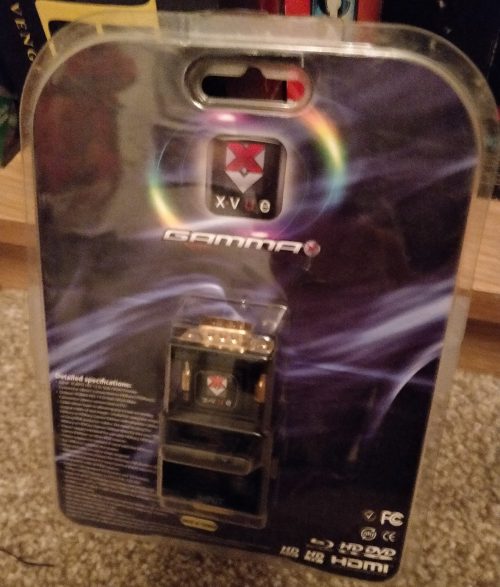
So I started looking around for a solution. Were I simply using Windows, I could of course have fixed this in software but this wasn’t what I was looking for being ever the DOS stalwart. There are no DOS software equivalents that I could find so I needed a hardware solution. Around the time HDMI started to become a thing, a company called X-Vue spotted a place in the market for HDMI to VGA adapters so that people with older projectors or CRT’s could connect an HD signal to their existing and presumably expensive home entertainment set up. They produced the HDFury for this job, later versions of which are for sale to this day. They also offered an add-on for it called the Gamma-X which is what got my attention. This gadget could be bolted on to the HDFury adding a slider control to boost the gamma level. It even conveniently uses VGA connections for in/out – exactly what I wanted.
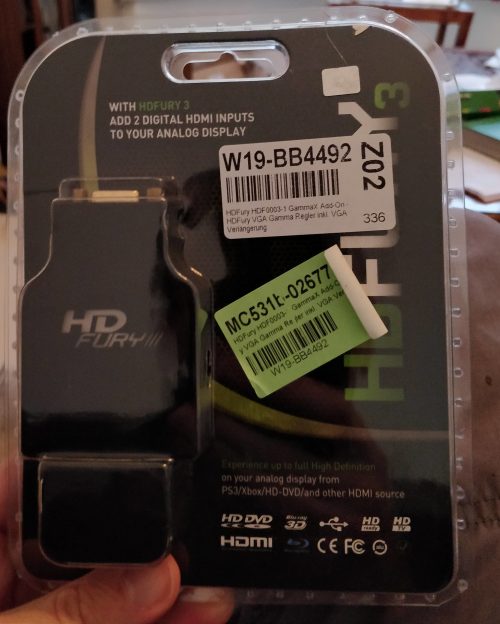
It would have been too easy if these were still being manufactured and they were discontinued 10 years back. Initial hunting found new old stock still for sale in Germany on Amazon. I tried twice to buy them on there from different sellers, both times being sent an HDFury III instead for no clearly obvious reason especially when there was a picture of the Gamma-X on the listings. I got a refund both times, and even got to keep the HDFury in one of those cases so it could be worse. Weeks after I’d started, I ended up on Ebay in the USA instead where there were a good number for sale around the $15 mark. I had concerns about the US power supply not being compatible but it turns out the adapter uses a USB cable which can be plugged straight into a PC.
Initial results were fairly good. The picture was significantly brighter with no washing out. This isn’t the easiest thing to make out in one of my photos but this can particularly be seen behind the lamp on the left with a larger amount of the background behind visible. Only one problem, it still wasn’t quite as bright as I was looking for even if set all the way to maximum. All that the Gamma-X is doing, is raising the RGB values of the signal so having come this far I figured there couldn’t be any good reason why I shouldn’t bolt in another one to boost it further.
Another trip to Ebay and more waiting for the postman and it does indeed work. The chain of cables under the desk is a little extreme but it’s a small price to pay for a usable CRT. It took me several months to get there but the picture is bright and vivid and I would hope that I’ll be using this for years to come.
I’d like to think when I write these posts that someone could eventually find some use out of them but the odds on anyone reading this being in the same situation seem extremely slim. If you do happen to have an Apple Studio Display around and are into DOS gaming, this is one way to get some use out of it at any rate. I’m not sure it’s something I’d recommend over a standard PC display otherwise. Given the extra expense and hassle, this was a gamble that didn’t entirely pay off in my case but I got where I wanted in the end.

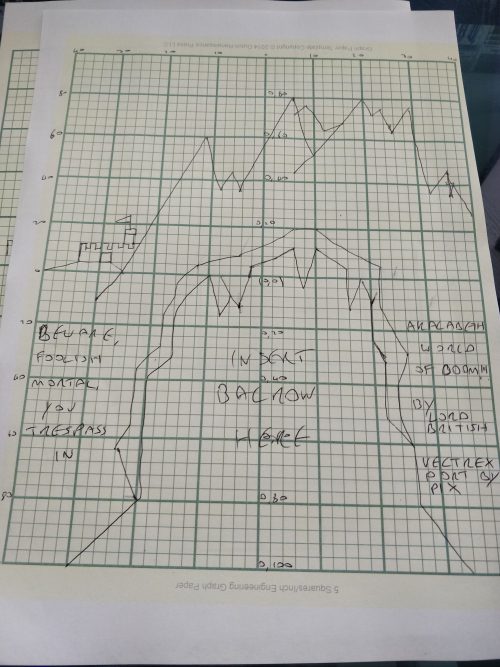
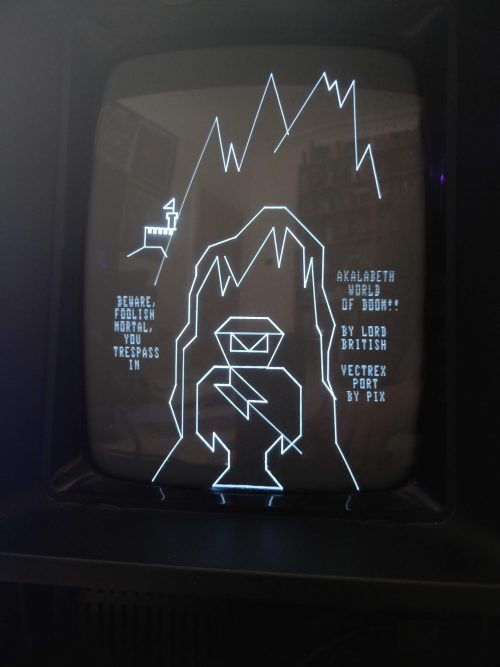
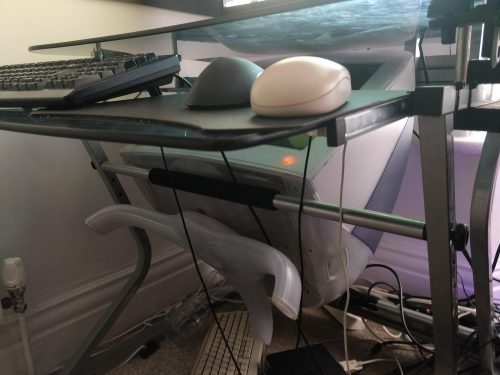
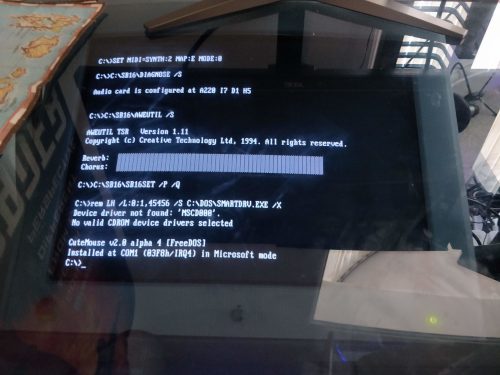
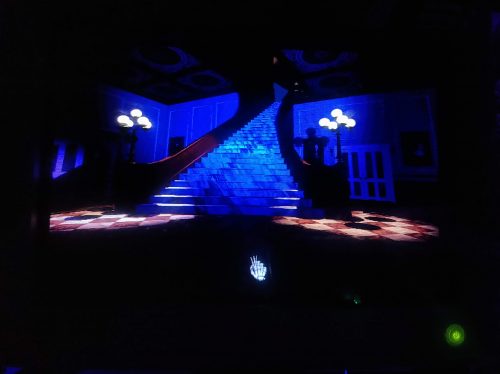
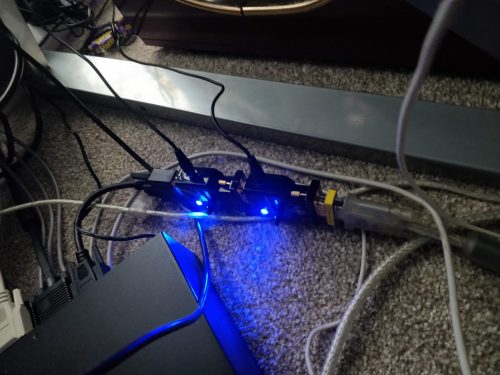
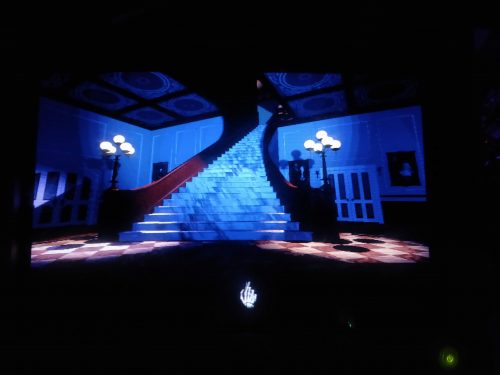
HI, firstly, thank you very much indeed for the tremendouse work on scanning those pc zones, took a wile to download even with my little auto batch utility! but got it done.
Incidentally reading your blog i saw you had a 21″ display form Apple and i found this https://github.com/bounav/open-USB-display-service-utility. if you go here https://github.com/bounav/open-USB-display-service-utility/issues/1 you’ll find some very useful info to adjust your screen.
Reading the service manual it seems that one would have [an official apple licensed repair person] a USB Display Service Utility, i gather this is plugged into the display and a utility will allow you to fix this up on screen and save the geometries.
I hope this info helps you.
Many thanks for this, it could be seriously useful to me. I’ll definitely be having a look into it. The default geometry has always been OK on this screen but I still struggled with the brightness on this thing even with the two GammaX’s. It’s not always obvious but the GammaX can cause a sort of ghosting effect in some circumstances also which I can live without. I ended up swapping it out with another CRT and only using it with an old Mac laptop. If I could use this tool to up the default brightness a bit, I could be back to 21″ DOS gaming again!
I’m digging into this. Now I know what to look for, I’ve found several options which didn’t work for my particular monitor as well as some linux programs to replace the display utility. I haven’t tried the latter since I haven’t got a linux setup to hand.
The original utility apparently only runs on OS 8 and 9 but that’s fine since I’m running 9 on my Mac so I’m trying to get that running. Finding a copy has been tricky but it is allegedly hiding on the service manuals image at https://macintoshgarden.org/apps/apple-service-manuals. My Mac is currently decompressing that very, very slowly. If it ever gets there, we’ll see if that does the trick.
That didn’t work as it not only needs OS9 but will then only work on particular Macs of the era and my iBook isn’t included. To cut a long story short, I ended up installing Debian on one of my old PC’s. That includes a utility called ddcutil which can be used for this. In my case none of the USB controls help. I can change the brightness and contrast but not beyond the max I already had them at and I can’t adjust the RGB values on my monitor to increase brightness that way. If I ever needed to adjust the other settings I now have a way to do it at least but as far as brightness goes, it was worth a go but ended up being a wild goose chase.
If you ever run into a “X-Bue Box1020”, it has a very similar gamma boosting circuit (X-Vue made the original Gamma X, as well) but I find it’s got a tad bit more range. It’s also got a YUV/YPbPr output as well, but I just use it RGB in, RGB out. Nothing worth going out of your way for, but it is a nice device!